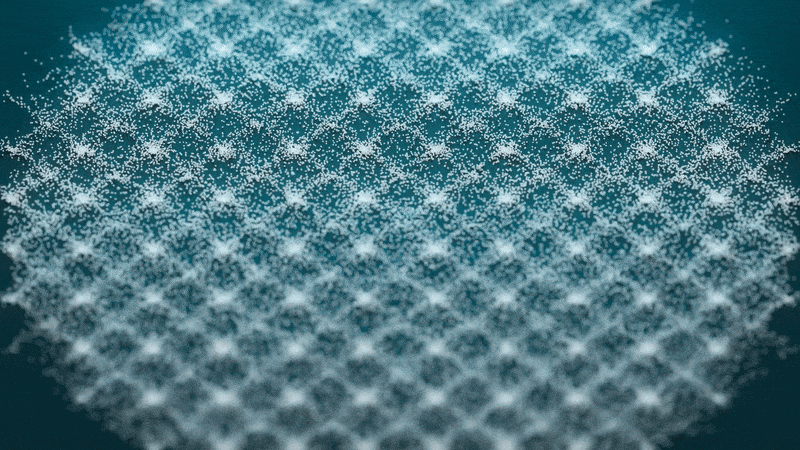Town's Disease Is Traced to a Surprising Culprit
After five years of lying low, Legionnaire's disease – a potentially fatal lung infection – returned to the small city of Alcoi, Spain, on July 21, 2009.
Two cases were confirmed by the end of the month, followed by eight in the first half of August, and one in the second half. The victims were 49 to 88 years old. All were hospitalized with fever and other symptoms; one died.
This profile is fairly typical for an outbreak of Legionnaire's disease; the source was not.
Since it infected 221 people, killing 34 of them, in the area of a convention of the American Legion (an organization for military veterans) in Philadelphia in 1976, the bacterium now called Legionella pneumophila has appeared around the world.
This microbe lives in fresh water nearly everywhere, and it becomes a problem only when inhaled as a fine spray or aerosol. (Legionella is harmless if you drink it.) Outbreaks are usually traced back to man-made supplies of warm water, such as water cooling systems, fountains, hot tubs, even showers.
This time in Alcoi, however, investigators could not trace the responsible strain to any of the usual suspects.
The history
Get the world’s most fascinating discoveries delivered straight to your inbox.
Alcoi is located in the mountains, near the Mediterranean coast of Spain. Beginning in 1999, Legionella infection began plaguing the warm season, with about two outbreaks occurring each year between spring and fall, plus sporadic cases, according to Mireia Coscollá, a researcher at the Universitat de Valéncia who analyzed the bacterial samples for the investigation.
"We really don't know what was happening," said Coscollá. Researchers speculated that the disease's presence was connected to the city's water-intensive textile industry or, perhaps, its mountainous geography, she said.
Then in 2005, the disease mysteriously retreated. A tightening of regulations on devices using water and producing aerosols may have played a role, Coscollá said.
When the disease returned in the summer of 2009, the local hospital, Hospital Virgen de los Llirios, collected samples from the patients and sent them to Coscollá in Valéncia. Using samples taken from patients and from suspected strains collected from the environment, Coscollá (who is currently at the Swiss Tropical and Public Health Institute) created genetic profiles, focusing on seven locations on the bacterial chromosomes, and compared them to find a match.
Meanwhile José Fenollar of Alcoi's Public Health Center was undertaking an exhaustive investigation in the city.
The challenge
Investigations into Legionella outbreaks are difficult, according to Dr. Lauri Hicks, a medical epidemiologist in the respiratory-diseases branch of the Centers for Disease Control and Prevention. The bacteria do not spread from person to person, but they are common in fresh water, so potential sources of bacteria are everywhere. Certain strains are more likely than others to cause outbreaks, but they will sicken only about 5 percent of the people exposed to them, Hicks told LiveScience in an e-mail.
"Often … we see several cases before we know what source is responsible for the outbreak," she said.
During the Alcoi outbreak, investigators mapped out each patient's whereabouts within a 1,640-foot radius (500 meters) during the two to 10 days before he or she became sick. The investigators looked for overlaps with other patients.
They also examined the city's drinking-water supply, patients' homes and all the classical suspects within Alcoi: refrigeration towers, water-vapor condensers, industrial humidifiers, air-conditioning systems based on water vapor, and so on, Fenollar told LiveScience.
They found nothing but negatives.
In the meantime, an analysis of the patients' locations revealed an unusual geographic shift. The first two cases occurred in the northern part of the city; however, the following eight appeared elsewhere, in the Santa Rosa quarter. So investigators expanded their search to include moving devices that used water, such as street-sweeping machines.
The perp
At this point, road repaving in the Santa Rosa neighborhood was under way. One of the machines in use was a milling machine that ground up old asphalt. It carried a 528-gallon (2,000-liter) water tank to supply atomizers, which sprayed a mist intended to settle dust. The water in this particular machine did not come from the municipal water supply, but directly from a spring, unchlorinated and untreated.
The suspicious machine, it turned out, had been at work in the northern part of the city around July 15 and in Santa Rosa starting July 31. On Aug. 21, investigators found the machine and took it out of service, although not in time to prevent the final case of Legionnaire's disease, which appeared two days later.
Meanwhile, Coscollá matched the patients' strain of Legionella with bacteria from three locations of this machine. (She also found other strains on the machine, she said.)
Coscollá and other investigators published their account in the CDC's Journal of Emerging Infectious Disease in September.
Hicks, who reviewed the article, says: "I believe this is the first article to implicate an asphalt paving machine. However, there are a number of potential sources for Legionnaire's disease that probably haven't been well described."
Although this discovery did not shed light on the previous outbreaks, it was a coup for the researchers in Valéncia.
"This is the first time that we found the strain showing the same molecular pattern [as] the outbreak strains recovered from patients," Coscollá said.
 Live Science Plus
Live Science Plus






